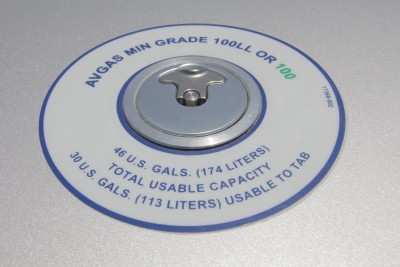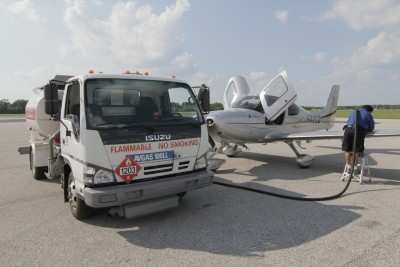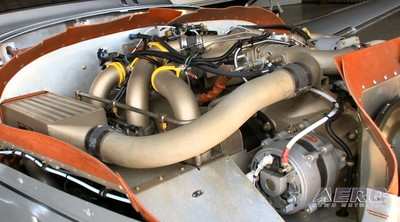Letter To Cirrus Owners Outlines Industry's Plan
A recent post on the Cirrus blog features an open letter from
company president and CEO Brent Wouters about the future of 100LL
gasoline. The latest Cirrus aircraft, the SR22T, is powered by a
Teledyne Continental engine that is optimized for flexible fuel
options.

"While this subject is by no means a new issue," Wouters writes,
"the recent Environmental Protection Agency (EPA) issuance of an
Advance Notice of Proposed Rulemaking (ANPR) regarding lead content
in aviation fuel formally initiates a regulatory decision-making
process and has increased awareness of this topic and its potential
future impacts. Cirrus has been actively working on this fuel
issue for many years now and we are integrally involved in the
industry leadership team working with the EPA, the FAA, and avgas
producers. Simply, we are aggressively focused to achieve the very
best path ahead and Cirrus will ensure that this path will keep
your aircraft flying with the minimum possible transition and
operating costs."
Wouters says that many aircraft manufacturers - including Cirrus -
and GA industry organizations agree that a transition to unleaded
fuel is appropriate. Moreover, the industry collectively agrees
that every effort should be made to find a transparent or
near-transparent replacement fuel for 100LL. However, a very
significant amount of research completed over the last 10 years to
identify a suitable 100 octane, or near 100 octane, unleaded fuel
has not yet resulted in a clear solution for a replacement fuel.
While there are several encouraging new high octane unleaded fuel
formulations being evaluated, such as Swift fuel and GAMI’s
G100UL, and Cirrus is supportive of all these efforts, the
challenge with these and any new fuels is in having to address many
issues beyond simply octane rating. Those other issues include
operation at temperature extremes, fuel stability over time, health
and safety aspect of the fuel and its combustion products, material
compatibility, ‘producibility’, cost and so on. As a
result and at present, the octane level of a future fuel is
uncertain. We do know that the lowest octane level that we may have
to contend with is 94, or 94UL as it is called. This is essentially
what is left when the tetra-ethyl lead is removed from the 100LL.
Wouters says Cirrus is working on contingency plans "in case we are
stuck with a 94 octane fuel, but let me be clear: Cirrus
Aircraft does not believe that a 94UL solution is desirable for its
owners or the health of the industry, and will strive for a better
replacement fuel."

The Aircraft Owners and Pilots Association (AOPA), Experimental
Aircraft Association (EAA), General Aviation Manufacturers
Association (GAMA), National Air Transportation Association (NATA),
National Business Aviation Association (NBAA), American Petroleum
Institute (API) and the National Petrochemical and Refiners
Association (NPRA) are collectively committed to working with EPA
and FAA toward the development of a Future Avgas Strategy &
Transition Plan (FAST) to help achieve significant reductions in
lead emissions from GA aircraft along a timeline which balances
environmental benefit with aviation safety, technical feasibility
and impact upon the GA industry.
The FAST Plan's objectives are to:
- Identify the best possible unleaded avgas replacement fuel by
working with the avgas producers, fuels research organizations,
owners and operators, the Coordinating Research Council (CRC), ASTM
groups, engine and airframe manufacturers, and FAA.
- Consider the impact, if any, on the existing fleet and fuel
infrastructure and long term availability (including cost).
- Develop a transition plan to unleaded avgas that preserves the
health of the industry and reduces impacts on owners and
operators.
- This avgas stakeholder group leadership team is also engaging
in collaborative efforts with aircraft owners groups, such as
COPA. While research continues toward the best unleaded fuel
solution, the stakeholder group is evaluating a two step transition
process. First, provide near term reductions in lead emissions from
GA by reducing the lead content of 100LL that would be completely
transparent to existing aircraft. Second, define a
transition to a viable unleaded avgas along an approximate 10 year
timeline depending upon the impact on aircraft and/or fuel
production and distribution infrastructure.

Wouters says Cirrus' efforts are focused in three main
directions. The company chairs the primary industry working group
team which began as a GAMA-based committee and has expanded to
collaborate with AOPA, EAA, and other key stakeholder groups. This
provides Cirrus with the information and access to the key
stakeholders, including oil companies, to help guide efforts that
will promote the best solution, which, again, is preferably a 100
octane or near-100 octane transparent replacement avgas. It has
also availed itself to support the needs of aviation fuels research
entities. This support can range from on-aircraft testing, to
chemical compatibility testing for airframe structures and system
components, to feedback on operational and cost aspects. Cirrus
also participates in the Coordinating Research Council (CRC)
technical research group and the ASTM unleaded fuel group.

Meanwhile, due to the uncertainty involved in this issue, Cirrus
is developing solutions for both existing and new aircraft that
address a wide range of possible fuel specification outcomes. This
doesn’t change our commitment to finding a transparent
solution. This week we are introducing a new aircraft model in the
SR22 family which is flexible to a wide range of future fuel octane
ratings. At the same time, we are working help ensure that all of
our aircraft models, both new and in the field, will be compatible
with a future unleaded fuel in either a transparent sense or with
reasonable upgrade paths.
 Classic Aero-TV: The Switchblade Flying Car FLIES!
Classic Aero-TV: The Switchblade Flying Car FLIES! ANN FAQ: Q&A 101
ANN FAQ: Q&A 101 ANN's Daily Aero-Term (04.12.24): Discrete Code
ANN's Daily Aero-Term (04.12.24): Discrete Code ANN's Daily Aero-Term (04.13.24): Beyond Visual Line Of Sight (BVLOS)
ANN's Daily Aero-Term (04.13.24): Beyond Visual Line Of Sight (BVLOS) ANN's Daily Aero-Linx (04.13.24)
ANN's Daily Aero-Linx (04.13.24)






